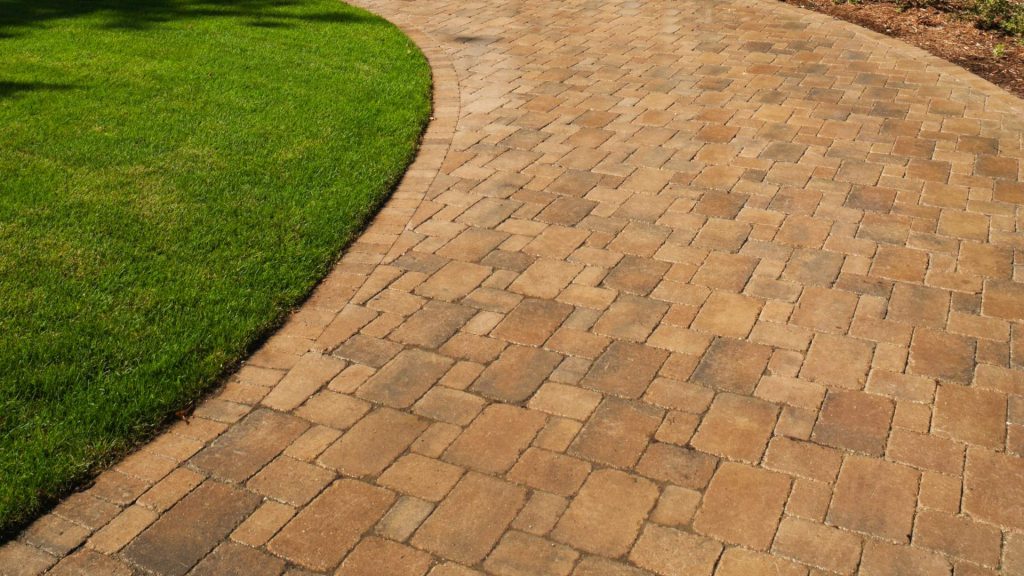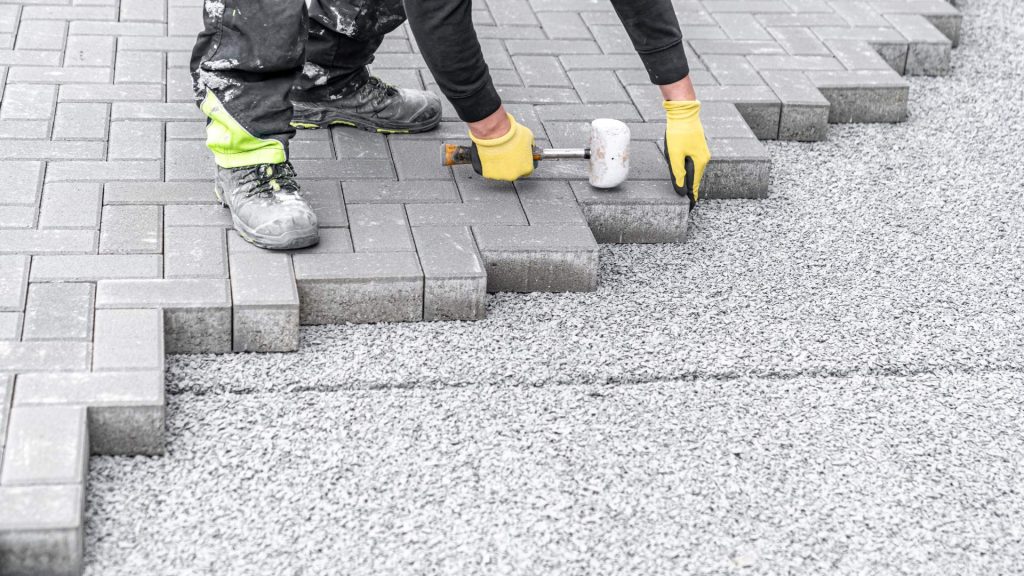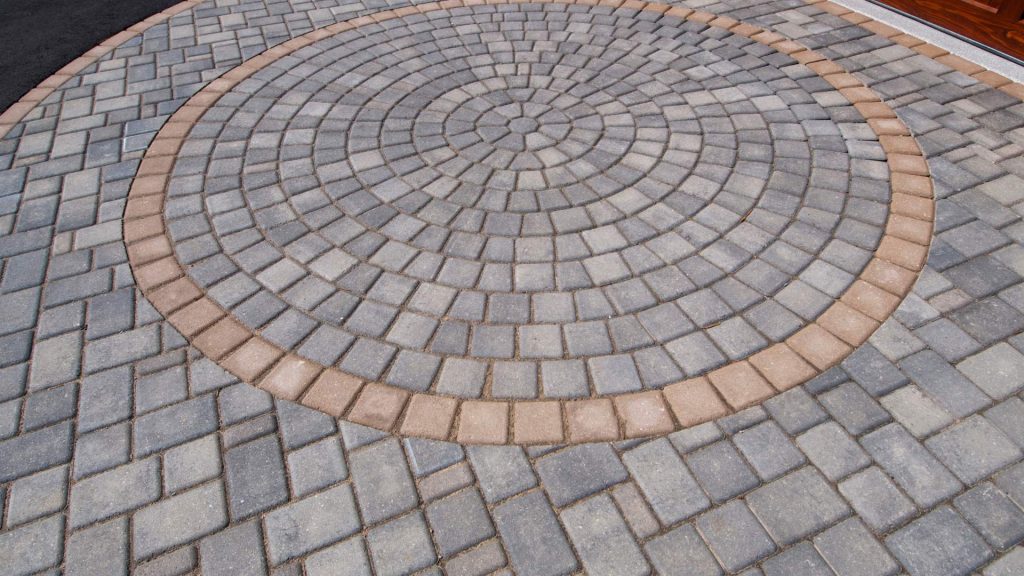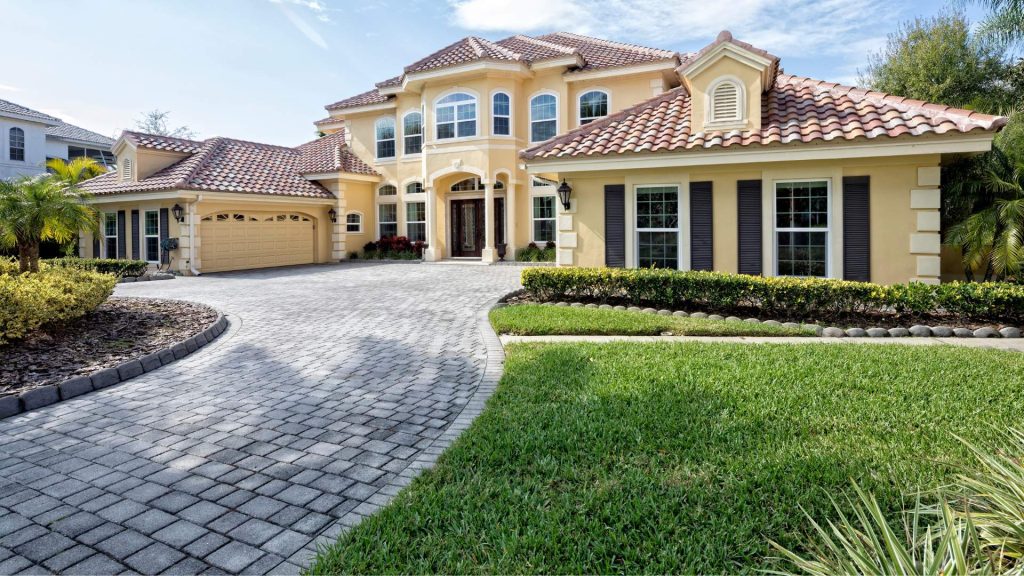Short Answer First: Which Is Better?
For most Collier County driveways, concrete pavers win on repairability, long‑term looks, drainage options, and resilience in Southwest Florida’s climate. Stamped concrete can be viable where budgets are tight and you want a single, monolithic surface—but you should plan for cracks, color fading, and patch‑match repairs over time. If you value curb appeal and easy spot fixes, go pavers. If you value lower upfront cost and a continuous slab look, stamped concrete can work—just commit to a disciplined maintenance schedule.
The Coastal Context: Sun, Rain, Sand, and Salt
Collier County driveways live through intense UV, sudden downpours, sandy soils, occasional salt exposure, and the turning loads of SUVs. This mix challenges any surface. The material that handles micro‑movement, drainage, and spot repair best tends to win the long game—especially in Golden Gate Estates (long runs and heavy vehicles) .

Head‑to‑Head Comparison
Durability & Movement
- Pavers: Segmental by design—the interlocking field flexes microscopically with base movement, reducing the risk of random cracks. Edge restraint plus polymeric sand keeps the field locked.
- Stamped Concrete: Monolithic slab; expansion/control joints attempt to manage cracking but random cracks can still appear from soil movement or thermal stress.
Repairs & Utilities
- Pavers: Easy to lift and reset a small area if you need to run new irrigation, add lighting, or fix a spot that settled. Color/pattern remains consistent.
- Stamped Concrete: Patches almost always show; matching color/pattern/texture is difficult. Utility cuts require saw lines and visible infill.
Drainage & Flooding
- Pavers: Options for permeable systems or relief bands near landscape beds. Joint network sheds surface water; no enormous puddles if the base is graded correctly.
- Stamped Concrete: Requires slope to surface drains or swales. Birdbaths and puddling can occur if finishing isn’t perfect.
Heat & Sun Fade
- Pavers: Choose lighter tones to keep the surface cooler; color runs through the unit on many products, so fade is gradual.
- Stamped Concrete: Pigments/hardener can fade; sealed gloss can chalk without maintenance. Darker stamps run hotter in midsummer.
Traction & Safety
- Pavers: Textured faces + joint microtexture provide good wet traction.
- Stamped Concrete: Texture helps, but sealer choice matters—some glossy films get slick when wet unless you add non‑slip grit.
Aesthetics & Resale
- Pavers: Deep pattern definition (herringbone, ashlar, plank) with border inlays and medallions. Adds a custom, upscale look popular in Park Shore and Pelican Bay.
- Stamped Concrete: Mimics stone or brick from a distance; up close, repeating stamp patterns and hairline cracks can reveal the slab. Still, a fresh stamp can boost curb appeal at a lower initial cost.
Lifecycle Maintenance
- Pavers: Re‑sand joints and reseal every 2–3 years as needed. Spot fixes are straightforward.
- Stamped Concrete: Plan on resealing cycles and addressing crack control. Color refreshes may be needed to keep the pattern visible.
Cost Reality in 2025 (What Drives Price in Collier County)
Exact numbers vary by square footage, access, excavation depth, and finish, but you can use these relative trends:
- Upfront: Stamped concrete is typically lower initial cost than a paver driveway of similar size and complexity.
- Long‑Term: Pavers often win on lifecycle cost because you can spot‑repair, reset, or expand without replacing the entire slab.
- Complexity Costs: Borders, inlays, and curves add cost to both systems; permeable pavers require deeper base and careful gradation.
- Access: Tight, in-town lots often cost more than open, rural installs due to additional staging and haul-out time.

Installation Steps That Matter (More Than Material)
For Pavers
- Excavation & Grading: Set elevations to move water away from structures and into safe discharge zones.
- Layered, Compacted Base: Mechanical compaction in lifts; depth depends on soil and traffic.
- Screeded Bedding Layer: Uniform thickness for a flat field.
- Pattern Lay & Borders: Tight joints; align borders to frame garage and street approaches.
- Edge Restraint: Hidden restraint to prevent lateral creep.
- Polymeric Sand & Activation: Lock joints; resist washout and weeds.
- Sealing (Optional): UV‑stable product for color enrichment and easy cleaning.
For Stamped Concrete
- Subgrade Prep & Forms: Achieve consistent thickness and slope.
- Reinforcement: Rebar/mesh or fiber per design; control joints planned.
- Pour & Finish: Coloring methods (integral, color hardener, release); stamping while plastic.
- Curing: Manage to avoid premature crazing; cut control joints on schedule.
- Sealer Application: Choose non‑slip additives; plan reseal cycles.
Collier County Use‑Cases (What We Recommend)
- High‑Traffic, Turning Loads (SUVs/Trucks): Pavers with reinforced base and strong edge restraint, especially on curved approaches.
- Tree‑Root or Utility Corridors: Pavers for easy lift/reset access.
- Budget‑Conscious Refresh: Stamped concrete can be serviceable with proper joints and a commitment to resealing.
- Drainage‑Challenged Lots: Permeable pavers or standard pavers with permeable relief bands outperform monolithic slabs during summer storms.

Common Myths
“Stamped concrete looks exactly like stone, forever.”
From the street—maybe. Up close, repeating stamp patterns and hairline cracks tell the story, especially after a few seasons of sun.
“Pavers always shift.”
Not with a proper base, edge restraint, and joint stabilization. If you see movement, it’s an installation issue, not a material inevitability.
“Permeable pavers are only for commercial lots.”
Homeowners in Golden Gate Estates use permeable bands to eliminate puddles and protect landscaping after downpours.
“Sealing makes everything slippery.”
Not when the right sealer and non‑slip additives are used. On pavers, joint texture already boosts traction; we tailor sealer to your slope/sun exposure.
Style Playbook for Driveways
- Coastal Classic: Light concrete pavers in ashlar with a charcoal border at the street; integrates with shell/pebble landscape beds.
- Modern Minimal: Porcelain-look pavers (drive-rated) in large formats create a clean, modern entry for contemporary homes.
- Estate Drive: Herringbone pavers with soldier‑course borders and a drop‑off apron to keep tires off lawn edges.
- Tropical Shade: Mix permeable paver strips between wheel paths to reduce runoff near heavy vegetation.
Maintenance: What to Expect Year‑to‑Year
Pavers:
- Quarterly: Rinse, blow debris, and spot treat.
- Annually: Top up polymeric sand at turn‑in areas and edges; inspect edge restraint.
- Every 2–3 Years: Reseal (if desired) to enrich color and ease cleaning.
Stamped Concrete:
- Quarterly: Rinse, keep organics off to prevent staining.
- Annually: Inspect control joints and hairline cracks; fill per spec.
- Every 2–3 Years: Reseal; add non‑slip grit on slopes.
Real Projects Around
- Golden Gate Estates Turn‑In: Long paver driveway with reinforced base and wide herringbone at the street for turning traction; no puddling after summer storms.
- Utility Upgrade: Lifted and reset a paver panel to add conduit for lighting—no visible patch.
- Budget Refresh: Stamped concrete with a subtle slate pattern and matte sealer; owners understand reseal and crack monitoring schedule.
FAQs
Do pavers handle heavy vehicles better than stamped concrete?
With the right base and edge restraint, yes. The segmental system flexes microscopically and is less prone to random slab cracking under turning loads.
Will stamped concrete always crack?
All concrete cracks. Control joints help direct cracks, but random cracking can happen from soil movement, thermal swings, or loads.
Which is cooler underfoot?
Light‑colored pavers generally feel cooler than darker stamped concrete. Shade and airflow also matter.
Can I switch part of my stamped driveway to pavers later?
Yes, but transitions require careful elevation and drainage planning. Many homeowners add a paver apron at the street for style and easy future repairs.
What boosts resale more ?
Buyers in many high-end communities consistently respond to paver driveways thanks to pattern depth, border detailing, and easy upkeep.
Final Take: Choose the System That Ages Well in Collier County
For most homeowners, a paver driveway offers superior long-term value, appearance, and flexibility. If your top priority is the lowest upfront cost and you like the look of a continuous slab, stamped concrete can work—just be aware of crack control, resealing needs, and patch visibility.

